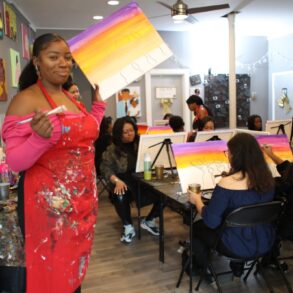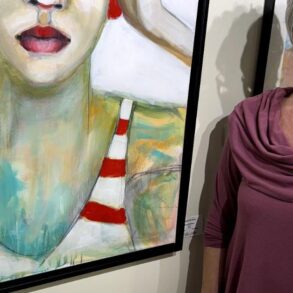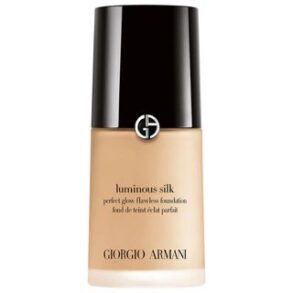The exhibition at Tate Britain showcases trailblazing female artists such as Angelica Kauffman, Artemisia Gentileschi, and Mary Beale.
Historically, British women artists have often been overlooked by historians, who tended to prioritise the work of men. However, a new exhibition at London’s Tate Britain is now shedding light on the female artists who carved out careers in a male-dominated world.
Featuring 110 female artists and 238 works, the exhibition titled ‘Now You See Us’ aims to showcase the achievements of women who defied societal norms and stereotypes to pursue careers in art. It spans from Tudor Britain to the early 20th century.
“This exhibition charts the road of the women artists over 400 years have been on, acting as professionals in a society that didn’t expect that of them. They were constantly told that they couldn’t and shouldn’t. And I think in every single room of this exhibition, you have women who are proving the precise opposite,” explains curator Tabitha Barber.
She adds: “They dared and they were determined, and they were brilliant at that and forged successful careers.”
What’s on display?
The exhibition begins with the formidable presence of Artemisia Gentileschi’s “Self-Portrait as the Allegory of Painting,” highlighting her significant contributions to British art during her time at the court of Charles I and Henrietta Maria.
Gentileschi’s journey reflects the challenges faced by women artists in Britain, as shown by the misidentification and relegation of her work, such as “Susanna and the Elders,” which was only recently recognised as hers in 2023.
Other notable artists on display include Flemish miniature painters Susanna Horenbout and Levina Teerlinc, whose works are praised internationally but remain difficult to attribute definitively.
Botanical still lifes by artists like Clara Maria Pope and Mary Delany highlight the scientific aspect of women’s art, while Mary Beale’s portraits capture the intimate moments of Restoration women.
One of the most remarkable pieces on display is Angelica Kauffman’s work commissioned for the Royal Academy’s Council Chamber, a space off-limits to women.
“When you get to the 20th century, I think that’s where the problem starts. It’s almost as if the very time when art history itself becomes an academic discipline, this inherited notion that women were genteel amateurs and their work was therefore less good, and therefore they were not a subject for proper study. I think that that really is a very difficult concept that we possibly inherited and still maintain today,” says Barber.
Video editor • Theo Farrant




